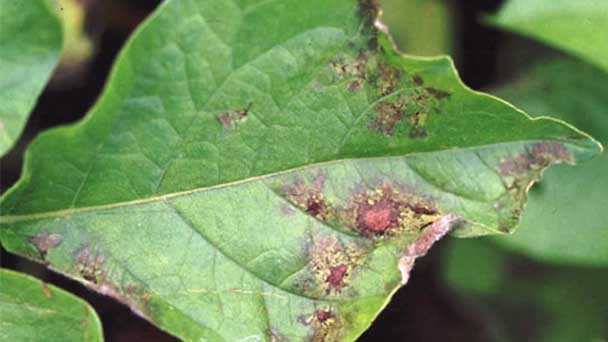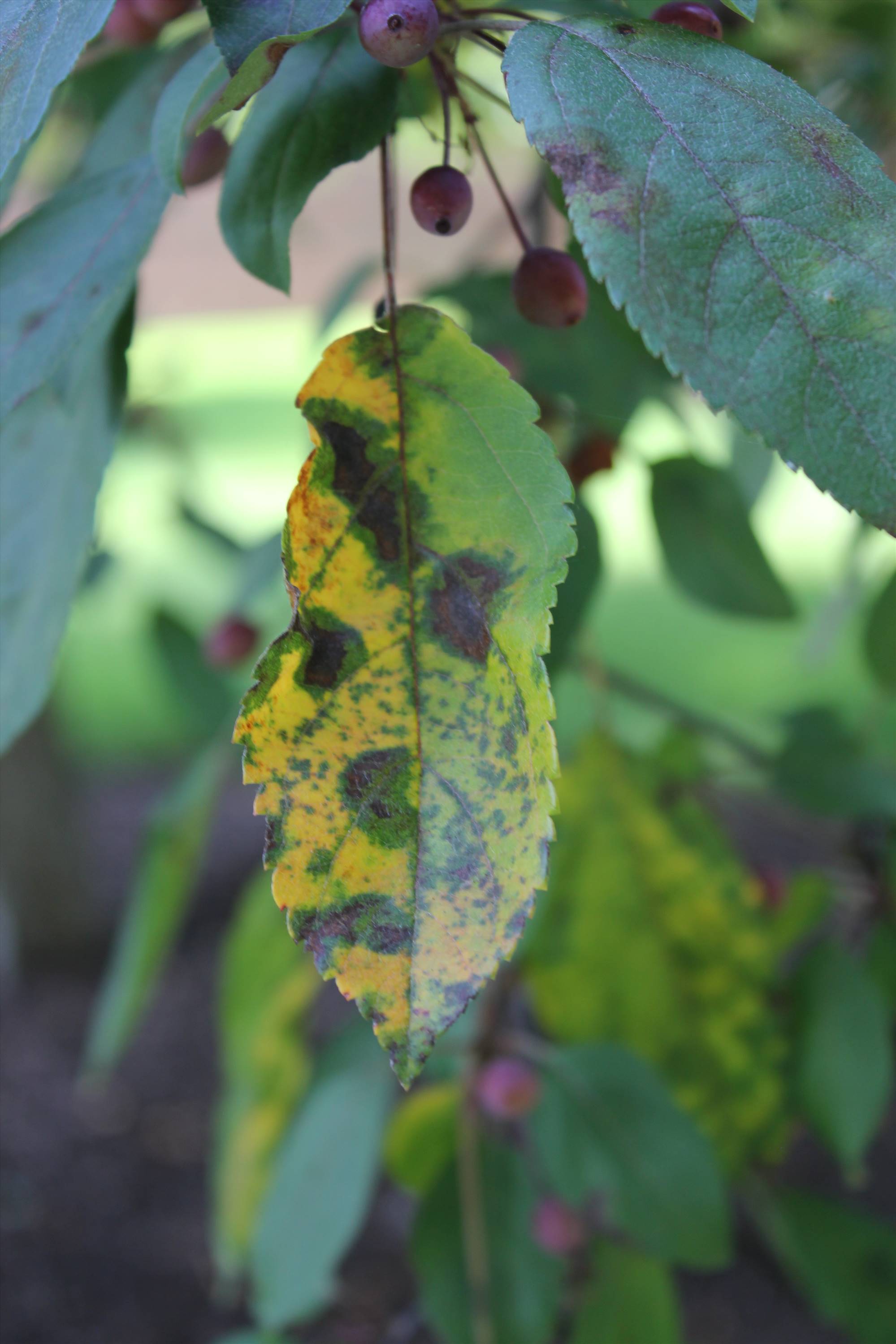Varieties and symptoms of plant diseases caused by fungi
Written by Joy
Sep 28 2020

The evolution system and comparison of plant diseases caused by fungi. 1. Three classes and one class system: ① Algae, ② Ascomycetes, ③ Basidiomycetes, ④ Imperfect fungi 2. Ainsworth (1973) system: Fungi (fungi) kingdom includes Myxomycota and Mycophyta. The Mycomycota includes 5 subphylums: ① Flagellum ② Zygomycota ③ Ascomycota ④ Basidiomycota ⑤ Deuteromycota. The main characteristics of the 5 subphyla of fungi: 3. The system of Alexopoulus (1979): ① Gymnobacter ② Flagellum ③ Aflagellate 4, Fungus Dictionary 9th edition (2001) classification

①Algae ②Ascomycetes ③Basidiomycetes ④Imperfect fungi
2. Ainsworth (1973) system:
The fungus (fungi) kingdom includes the Myxomycota and the Fungus. The Fungus includes 5 sub-phylums: ① Flagellum subphylum ② Zygomycota ③ Ascomycota ④ Basidiomycota ⑤ Deuteromycota.
3. The system of Alexopoulus (1979):
① Gymnomycota ② Flagellar phylum ③ Aflagellate phylum
4. Fungi belong to three kingdoms:
(1) Protozoa: ①Myxomycota ②Rhizobacteria
(2) Algae: ①Hychochytrium ②Netmyxomycete ③Oomycete
(3) Fungi: ①Chytridomycota ②Zygomycota ③Ascomycota ④Basidiomycota
(1) Caused disease
Rhizophora causes root swelling of cruciferous vegetables; Pythium causes root rot, damping off and fruit rot of plant seedlings; Phytophthora causes cucumber blight, tomato late blight, etc.; Downy molds can cause a variety of plants Downy mildew.
(2) Disease characteristics
It will cause plant rot-type symptoms, and the diseased part produces mildew. Symptoms of local chlorotic necrosis or deformed enlargement of plants, and downy mildew, white rust and other symptoms in the diseased part.
Prevention: chlorothalonil, mancozeb, etc.
(3) Therapeutic medication
Evophos aluminum, metalaxyl, hymexazol, propamocarb, cymoxanil, dimethomorph, silver farad, etc.
2. Zygomycotina
(1) Cause disease
Rhizopus can cause soft rot of melons and fruits, without odor.
(2) Disease characteristics
This type of fungus often causes rot disease of various plant fruits, tubers, bulbs, etc. The surface of the diseased part appears loose and gray at the beginning, and then turns into gray-black mucor.
(3) Therapeutic medication; its medication is the same as that of flagella.
Exocystis causes peach leaf shrinkage. Powdery mildew can cause powdery mildew in many plants. Black husk causes apple tree rot; Venturia causes pear scab. Streptococcus sclerotium causes peach Brown rot. In addition, the subphylum fungi can also cause grape black pit, melon vine blight, a variety of fruit trees, flowers and trees, and vegetable sclerotinia disease.
(2) Disease characteristics
Causes plant stems, leaves, fruit necrotic spots or a few roots to appear rot and tumors and other diseases, and some branches and leaves form arbuscular branches and shrunken leaves. Symptoms such as white powder, mold, small black particles, cotton flocs, and sclerotia appear in the diseased area.
(3) Therapeutic medication
Scab, powdery mildew: azoles, polyoxin, etc.
Smut fungus can cause a variety of plant smut, and a large amount of black powder appears in the diseased part. Rust fungus can cause a variety of plant rust, and the diseased part produces yellow or brown powder. In addition, the fungi of Benia can cause peanut purple pattern feather disease, citrus plaster disease, rhododendron cake disease and so on.
(2) Therapeutic medication
Rust, smut: azoles, polyoxin, etc.
Powdery mildew is caused by Verticillium. Verticillium is caused Verticillium wilt of various plants. Botrytis is caused various Botrytis cinerea. Alternaria is caused black spot and leaf spot of various plants. Fusarium Causes melon wilt. Cyclospora scab causes grape black pit, citrus scab, solanaceae vegetable scab, grapefruit scab, peanut scab, pepper scab, etc., but potato scab and tomato scab are not included in this Class, it is caused by bacteria.
Anthracnose causes many kinds of plant anthracnose; Phoma macrophylla causes apple and pear ring disease; Phoma spp. causes eggplant brown spot disease.
(2) Disease characteristics
The types of disease symptoms mainly include spots, rot, wilting, anthracnose, wilting, and deformities. The types of disease symptoms mainly include powdery powder, mold layer, sclerotia, and small particles in the diseased area.
(3) Therapeutic medication
Grey mold medication: iprodione, methyl palladium, dimethocarb, pyrimethanil, sclerotia, etc.; spot, brown spot, brown streak, leaf spot, anthracnose, early blight: methyl trop, iprodione , Azoles, polyoxin, prochloraz, thiram, etc.; fusarium wilt, verticillium wilt, wilt, stem base rot, root rot: methotrexate, carbendazim, hymexazol, copper preparations, Siloxane, metalaxyl, etc.
Most of them grow in water or soil. The main diseases are damping-off, root rot, downy mildew, white rust, blight, and cotton blight. Generally, there are more cases in the spring and autumn when the temperature is low (15-20℃) and humid.
2. Higher fungi
The main diseases are head blight, powdery mildew, anthracnose, leaf spot, black spot and so on. Such as, wheat head blight; peanut black spot; grapes, apples, peaches, melons, wheat, beans, sugar beet powdery mildew; cotton, beans, melons anthracnose; apple, pear scab; peach , Apricot leaf shrinking disease; melon vine blight; grape black rot, house blight; apple ring stalk, black rot, rot disease, dry rot; onion leaf blight; eggplant brown streak disease, etc. The disease occurs mostly in spots, and the affected part has a more obvious edge, which forms a certain shape of the disease spot.
3. The highest fungus
The main diseases caused are smut, rust, sheath blight and wilt. Such as, smut of cereal crops, bunt, grain smut, leaf smut, pears, peaches, apples, grapes, beans, peanuts, onions, sunflower rust, cotton, eggplant blight. Generally, it only causes local infection, causing spot symptoms.

1. The evolution and comparison of plant diseases caused by fungi
1. A system of three outlines and one category①Algae ②Ascomycetes ③Basidiomycetes ④Imperfect fungi
2. Ainsworth (1973) system:
The fungus (fungi) kingdom includes the Myxomycota and the Fungus. The Fungus includes 5 sub-phylums: ① Flagellum subphylum ② Zygomycota ③ Ascomycota ④ Basidiomycota ⑤ Deuteromycota.
3. The system of Alexopoulus (1979):
① Gymnomycota ② Flagellar phylum ③ Aflagellate phylum
4. Fungi belong to three kingdoms:
(1) Protozoa: ①Myxomycota ②Rhizobacteria
(2) Algae: ①Hychochytrium ②Netmyxomycete ③Oomycete
(3) Fungi: ①Chytridomycota ②Zygomycota ③Ascomycota ④Basidiomycota
2. The main groups of fungi and the diseases caused by them
1. Flagellum subphylum(1) Caused disease
Rhizophora causes root swelling of cruciferous vegetables; Pythium causes root rot, damping off and fruit rot of plant seedlings; Phytophthora causes cucumber blight, tomato late blight, etc.; Downy molds can cause a variety of plants Downy mildew.
(2) Disease characteristics
It will cause plant rot-type symptoms, and the diseased part produces mildew. Symptoms of local chlorotic necrosis or deformed enlargement of plants, and downy mildew, white rust and other symptoms in the diseased part.
Prevention: chlorothalonil, mancozeb, etc.
(3) Therapeutic medication
Evophos aluminum, metalaxyl, hymexazol, propamocarb, cymoxanil, dimethomorph, silver farad, etc.
2. Zygomycotina
(1) Cause disease
Rhizopus can cause soft rot of melons and fruits, without odor.
(2) Disease characteristics
This type of fungus often causes rot disease of various plant fruits, tubers, bulbs, etc. The surface of the diseased part appears loose and gray at the beginning, and then turns into gray-black mucor.
(3) Therapeutic medication; its medication is the same as that of flagella.
3. Ascomycotina
(1) Cause diseaseExocystis causes peach leaf shrinkage. Powdery mildew can cause powdery mildew in many plants. Black husk causes apple tree rot; Venturia causes pear scab. Streptococcus sclerotium causes peach Brown rot. In addition, the subphylum fungi can also cause grape black pit, melon vine blight, a variety of fruit trees, flowers and trees, and vegetable sclerotinia disease.
(2) Disease characteristics
Causes plant stems, leaves, fruit necrotic spots or a few roots to appear rot and tumors and other diseases, and some branches and leaves form arbuscular branches and shrunken leaves. Symptoms such as white powder, mold, small black particles, cotton flocs, and sclerotia appear in the diseased area.
(3) Therapeutic medication
Scab, powdery mildew: azoles, polyoxin, etc.
4. Basidiomycotina
(1) Diseases and characteristicsSmut fungus can cause a variety of plant smut, and a large amount of black powder appears in the diseased part. Rust fungus can cause a variety of plant rust, and the diseased part produces yellow or brown powder. In addition, the fungi of Benia can cause peanut purple pattern feather disease, citrus plaster disease, rhododendron cake disease and so on.
(2) Therapeutic medication
Rust, smut: azoles, polyoxin, etc.
5. Deuteromycotina
(1) Caused diseasePowdery mildew is caused by Verticillium. Verticillium is caused Verticillium wilt of various plants. Botrytis is caused various Botrytis cinerea. Alternaria is caused black spot and leaf spot of various plants. Fusarium Causes melon wilt. Cyclospora scab causes grape black pit, citrus scab, solanaceae vegetable scab, grapefruit scab, peanut scab, pepper scab, etc., but potato scab and tomato scab are not included in this Class, it is caused by bacteria.
Anthracnose causes many kinds of plant anthracnose; Phoma macrophylla causes apple and pear ring disease; Phoma spp. causes eggplant brown spot disease.
(2) Disease characteristics
The types of disease symptoms mainly include spots, rot, wilting, anthracnose, wilting, and deformities. The types of disease symptoms mainly include powdery powder, mold layer, sclerotia, and small particles in the diseased area.
(3) Therapeutic medication
Grey mold medication: iprodione, methyl palladium, dimethocarb, pyrimethanil, sclerotia, etc.; spot, brown spot, brown streak, leaf spot, anthracnose, early blight: methyl trop, iprodione , Azoles, polyoxin, prochloraz, thiram, etc.; fusarium wilt, verticillium wilt, wilt, stem base rot, root rot: methotrexate, carbendazim, hymexazol, copper preparations, Siloxane, metalaxyl, etc.
6. Classification of fungal diseases
1. Lower fungiMost of them grow in water or soil. The main diseases are damping-off, root rot, downy mildew, white rust, blight, and cotton blight. Generally, there are more cases in the spring and autumn when the temperature is low (15-20℃) and humid.
2. Higher fungi
The main diseases are head blight, powdery mildew, anthracnose, leaf spot, black spot and so on. Such as, wheat head blight; peanut black spot; grapes, apples, peaches, melons, wheat, beans, sugar beet powdery mildew; cotton, beans, melons anthracnose; apple, pear scab; peach , Apricot leaf shrinking disease; melon vine blight; grape black rot, house blight; apple ring stalk, black rot, rot disease, dry rot; onion leaf blight; eggplant brown streak disease, etc. The disease occurs mostly in spots, and the affected part has a more obvious edge, which forms a certain shape of the disease spot.
3. The highest fungus
The main diseases caused are smut, rust, sheath blight and wilt. Such as, smut of cereal crops, bunt, grain smut, leaf smut, pears, peaches, apples, grapes, beans, peanuts, onions, sunflower rust, cotton, eggplant blight. Generally, it only causes local infection, causing spot symptoms.
Latest Updated
- Benefits of Bugleweed - 7 Science-backed Health Benefits
- Bugleweed Dangers & Side Effects - Is It Poisonous?
- How to Plant Evergreen Trees - What You Should Know
- When to Plant Evergreens - Grow Guide for Evergreen Trees
- 12 Wonderful Evergreen Shrubs for Your Garden
- 12 Popular Evergreen Plants with Pictures for Beginners
- When And How To Prune A Lilac Bush Like a Pro
- How to Grow & Care for Lilac Vine (Hardenbergia Violacea)
- Japanese Lilac Tree (Syringa Reticulata) Care & Propagation Guide
- Shumard Oak Pros and Cons - What to Know
Popular Articles
- Winter maintenance of Antirrhinum Majus
- How to Grow Terminalia Mantaly Tree
- How to Grow and Care for Crossostephium Chinense
- How to grow Antirrhinum Majus in spring
- Peristeria Elata (Dove Orchid) Profile: Info & Care Guide
- Underwatered Snake Plant (Sansevieria Trifasciata) - Signs And How To Fix
- How to Care for Brazilian Jasmine Plant (Mandevilla Sanderi)
- How to Grow & Care for Graptopetalum Purple Delight in Summer
- Rosa Chinensis (China Rose): Plant Growing & Care Tips
- How to Care for Baby Sun Rose (Aptenia Cordifolia)